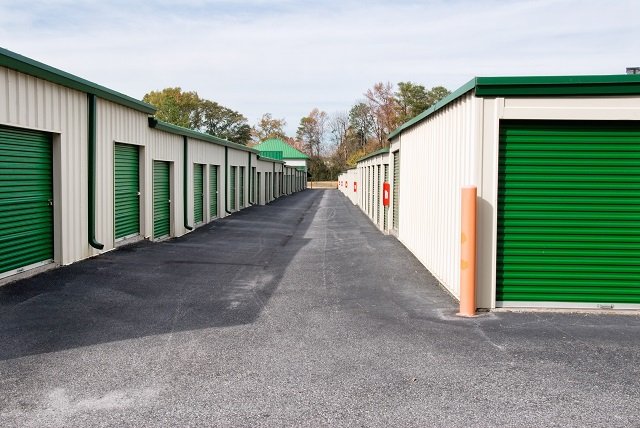If you’re getting ready to store valuable or temperature-sensitive items, it’s a good idea to consider climate- and humidity-controlled self storage. Do you understand the difference between the two, or are you looking for advice on the benefits of these types of storage. Read the following information to learn more about humidity- and climate-controlled self storage.
Standard self storage units are sufficient for most household and business items, but your temperature-sensitive and irreplaceable goods need the added protection of climate- or humidity-controlled storage.
If you collect valuable artwork or antiques or just want to store furniture, photographs, and electronics, you need climate-controlled self storage. The consistent temperatures of a climate-controlled storage unit will protect your belongings from damage and deterioration.
Another option to consider is humidity-controlled self storage. Humidity-controlled storage adjusts the humidity of the air inside your space to maintain safe levels of moisture regardless of temperature fluctuations. This type of storage reduces the chances of mold, mildew, rust, and rot.
Check out the following information so that you recognize the difference between climate- and humidity-controlled storage.

Climate- and Humidity-Controlled Storage: What’s the Difference
The phrase “climate control” is one of the most confusing subjects in the self-storage industry. Climate control should manage both temperature and humidity within a narrow range, but in some cases, only temperatures are controlled and humidity levels are ignored.
Climate-Controlled Storage
Climate-controlled storage is the more familiar of the two options. Climate-controlled storage units are typically kept between 55 and 85 degrees Fahrenheit with a base humidity of 55 percent. There are no set industry standards for climate-controlled storage. Always ask facility operators for their specific temperature and climate-control standards. They should be able to explain what they do to maintain these standards and give you this information in writing.
- Look for a facility that offers climate monitoring. The temperature and humidity should be continually monitored to verify that settings remain consistent. Ask the manager if they use generator backup in case of a lengthy power outage.
- It’s not completely impossible, but it is rare to find climate control in a drive-up, outdoor unit. If this type of unit is advertised as climate-controlled, it’s more likely that it is simply heated or cooled to some degree. This is not true climate control.
- Always read your rental agreement carefully. Storage facilities aren’t responsible for the items that you store. No facility will give you a “guarantee” that truly covers your belongings, so it’s up to you to insure your stored items. If you have a standard homeowners or renters insurance policy, it’s likely that you have off-premises coverage. Talk to your insurance agent to verify your coverage. Additionally, you can check to see whether your facility offers a tenant protection plan. This is not insurance, but another layer of protection for your belongings. Ask you facility manager for details.
To prevent damage and deterioration, items that should be kept in climate controlled storage include:
- Antiques
- Artwork
- Documents
- Electronics
- Furniture
- Photographs
Humidity Controlled Storage
Humidity control is a type of storage where the humidity is managed with an air conditioner or dehumidifier installed in the building. Generally, the humidity levels are kept around 55 percent, however, this varies based on the facility. The property manager should be happy to provide you with details.
Items that should be stored in a humidity-controlled unit include:
- Clothing
- Delicate Paper Items
- Fabrics
- Instruments
- Metals
- Wine
Which Option is the Best Fit for My Needs
Self storage facilities will frequently offer both climate- and humidity-controlled units. These spaces use high-quality HVAC systems. The units are often advertised as climate-controlled storage. It’s important to ask the manager whether or not the space is both climate- and humidity-controlled.
Having both climate- and humidity-controlled storage prevents a variety of problems. Mold, mildew, and rotting are can be stopped. Valuable artwork, musical instruments, and wine, as well as many of your prized possessions need the protection of both climate and humidity control.
When you’re trying to decide which type of storage is best for your needs, consider several factors. Are you storing valuable or sentimental items that are expensive, or even impossible, to replace? Are you looking at short- or long-term storage/ If you’ll be using self storage for only a month or two, the extra expense of temperature and humidity control may not be worth it. It’s also important to consider the climate of your storage location.
Summary
Now that you have a better understanding of the similarities and differences of climate- and humidity-controlled storage, you can make an informed decision. In most cases, the manager of the facility can guide you in the right direction as far as the type of storage that suits your requirements.